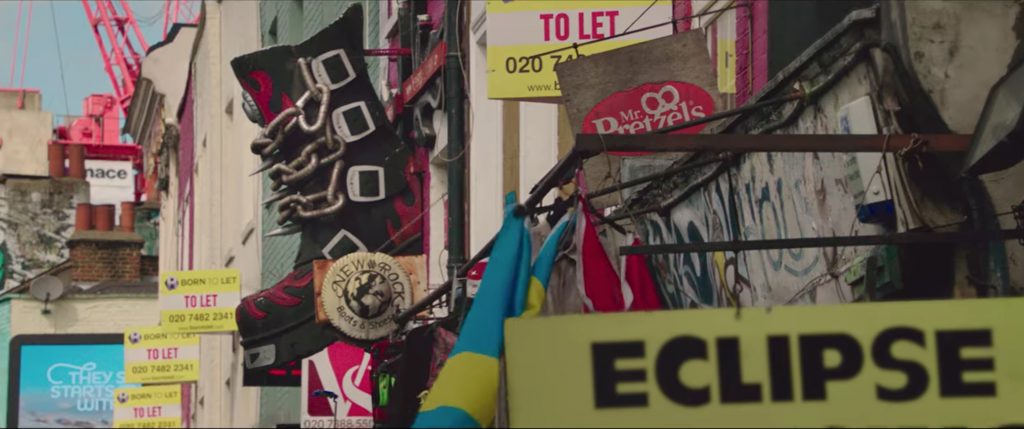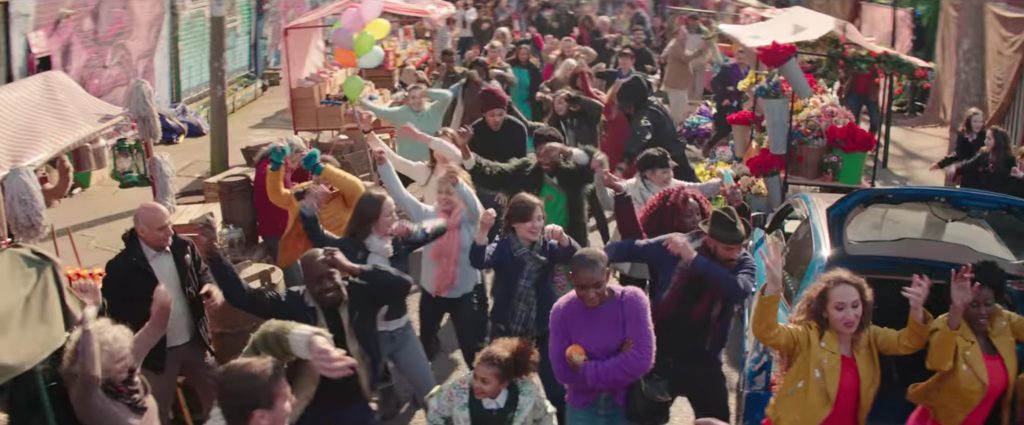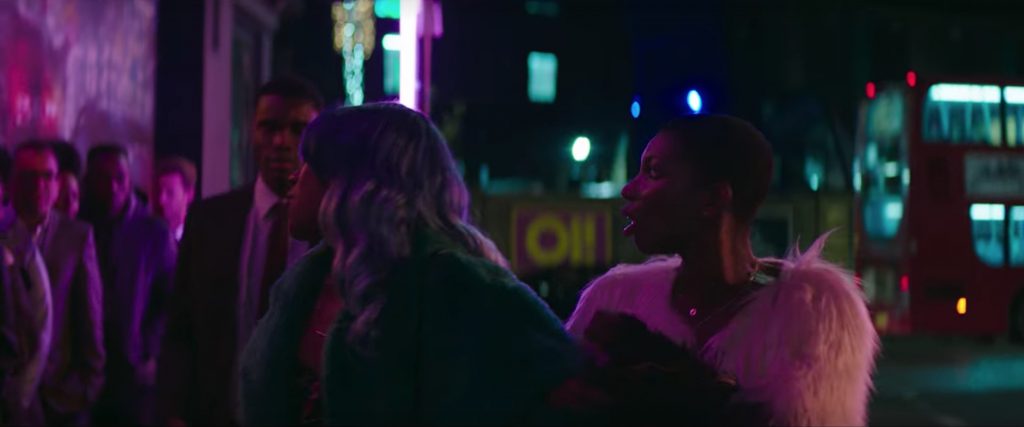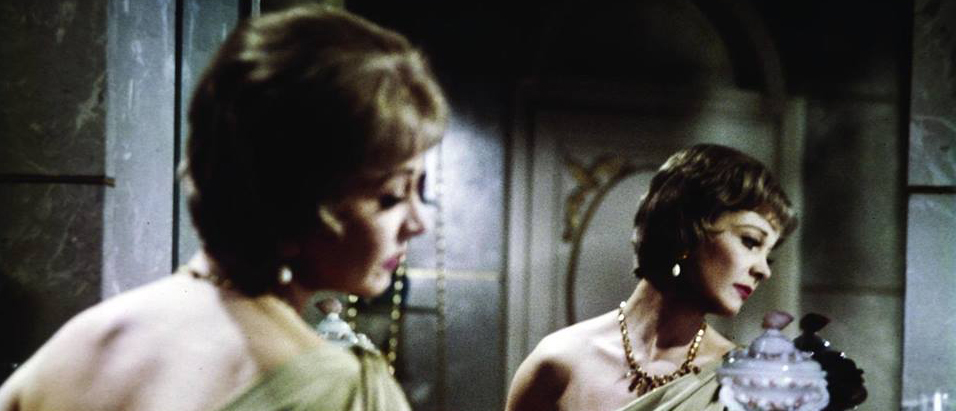In the second of Living British Cinema’s new film writing commissions Lisa Duffy writes about the neon tinged 2018 musical romance ‘Been So Long’, which resists showing a London identifiable to tourists. Instead it captures a magical Camden mishmash of kebab shops, tattoo parlours and graffiti-marked canals, which evoke a genuine genius loci of the city.

The legacy of the British film musical is one that is tied to locality, adhering far more closely to regional nuance than their Hollywood counterparts. Christine Gledhill notes that British cinema, much like British culture in general, is inextricably tied to ‘a geographic mapping of social-class-defined spaces’; simply put, ‘geography rules’. 1 British musicals are awash with area-specific accents, landmarks and references which would never be allowed by the American studios focused on broad international appeal. Contemporary offerings in the genre uphold this devotion to specificity of place, perhaps none more so than 2018’s Been So Long, a musical romance set against the vibrant backdrop of Camden.
Director Tinge Krishnan resists showing a London identifiable to tourists, instead catering to an iconography known only to locals, the opening shots dwelling on seemingly unremarkable markers of Camden Town as dawn breaks —a litter-strewn high street with storefront gates shut tight, a row of ‘To Let’ signs dispersed amongst pubs and kebab shops, the large neon sign of a tattoo parlour dark under the rising sun, council flats stacked high into the sky. Even the bird’s eye view of this neighbourhood is careful to leave the more iconic buildings of the City of London washed out in the far distance, barely registering recognition. The reverential music that plays over these establishing shots gives way to musical fantasy as the neighbourhood awakes with a bustling street market bursting forth in colour, choreography, and calypso beats. As street vendors and local inhabitants dance and sing in perfect synchronicity, Simone (Michaela Coel) and Raymond (Arinzé Kene) are introduced as removed from the ruckus, identified by musical conventions as a future romantic couple who will eventually be brought together through the communal uniting of song.

The feeling of authenticity of the space is aided by these musical numbers, which shade in the emotions of the various characters populating the film. British film musicals have traditionally straddled a complicated dual identity. John Mundy observes that in the heyday of the musical’s popularity during the 1930s to 1960s, British musicals borrowed generic conventions from Hollywood whilst simultaneously resisting ‘generic coherence’. 2 These films were rarely the glossy, polished products churned out by their American studio system cousins. Rather, as Lawrence Napper points out, they took ‘pains to identify themselves as part of an explicitly British theatrical tradition, celebrating its heritage as a distinctive “native” popular culture’. 3 Having begun life as a stage show at the Young Vic, Been So Long’s theatrical roots are seen in its loose narrative structure, eschewing the clarity typically associated with mainstream films. While the plot does centre Simone and Raymond’s tentative romance in line with the classical Hollywood musical model, the ever-growing number of secondary characters complicates the straightforward action, never pausing long enough on one storyline to explore the intricacies of the situations. The songs the characters sing replicate the music one might hear walking through Camden Market, a mishmash of soul, R&B, funk and Caribbean influences. Like the plot, these too are rarely complete, emerging as snippets to colour in emotions rather than provide a lyrical certainty that might be found in bridges and choruses. Depth is not the focus of the film; it is enough to walk away with just a feeling for this North London community.

‘I used to think this hill wasn’t for people like me’, says Simone as she sits next to Raymond on a bench atop Primrose Hill looking down on the central London skyline. It is the only time the film draws attention to the more universally recognised city icons, emerging in a distant world inherently separate from the magically musical realm of Camden. That other London, the one seen in Hollywood productions, like My Fair Lady or Mary Poppins, upholding a false whiteness of the city, is deliberately withheld from the inhabitants of Been So Long, which looks and sounds like the London of reality. Even the casting of Coel as leading lady lends itself to the reading of the film as a local one. Coel, like Gracie Fields before her (‘Rochdale’s Own Girl Vocalist’), has a star persona that is linked to a specificity of British place, known for lovingly exploring East London in intricate detail in television programmes like Chewing Gum and I May Destroy You.

The production design honours the feeling of Camden, the new grafting itself onto the old without eradicating a sense of past, as neon signs shine forth from the orange-brown bricks of Victorian buildings. While gentrification awaits at the margins (predominantly in a subplot of the imminent foreclosure of a local pub, which, in true musical fashion is implausibly saved in the final hour with one night of steady business), it is never a central concern, leaving a utopian feeling intact. Neon lights are woven throughout the film, from background illumination on nights out to rainbow lens flares accompanying characters’ feelings of happiness. When Simone and Raymond go to his flat after their first date ‘for tea’, a soft purple light slowly washes over the scene as the pair let down their walls to finally duet (and do it). Lighting is used to make everyday locations magical, setting the stage for musical moments to organically spring forth.
Neon also extends to the text messages between characters which pop up on the screen mimicking the blinking signs of the neighbourhood, allowing for communal connections to exist even when characters are not physically inhabiting the same space. This collapsing of spatial boundaries occurs in different ways throughout the film, notably in a morning-after shower scene showing Simone and Raymond in their separate bathrooms sharing a blissful duet with a split-screen reminiscent of the Doris Day and Rock Hudson sex comedies of the 1960s (or, to travel back further in time, Maurice Chevalier and Jeanette MacDonald’s ‘sharing’ a bed in 1932s Love Me Tonight). The aesthetic stamp of Camden flows organically through both physical and digital space, always connecting the main characters to an overarching sense of community through visual markers.

Netflix’s acquisition of Been So Long, reportedly the largest ever at the company for a UK film, was hailed at the time as a sign of the streaming service’s interest in local cinema. 4 Rather than construct a generalised view of a city to appeal to a worldwide audience, the film honours the legacy of the British musical by celebrating the insular contentment found within a community. The utopia that musicals so often strive for does not have to materialise in generic gowns and lavish sets; it is more likely to be found under dilapidated bus shelters or along graffiti-marked canals, welcoming those who seek authenticity in their escapism.
Lisa Duffy
2020
- Christine Gledhill, Reframing British Cinema, 1918-1928: Between Restraint and Passion (London: BFI, 2003), 20.
- John Mundy, The British Musical Film (Manchester: Manchester University Press, 2007), 35.
- Lawrence Napper, ‘British Gaiety: Musical Cinema and the Theatrical Tradition in British Film’, in The Sound of Musicals, ed. Steven Cohan (London: British Film Institute, 2010), 31.
- Andreas Wiseman, ‘Netflix strikes biggest UK deal on Michaela Coel musical Been So Long’, Screen Daily, 7 September 2017, https://www.screendaily.com/news/netflix-strikes-biggest-uk-deal-on-michaela-coel-musical-been-so-long-exclusive/5122009.article
This article also appears in Garageland 23: Living British Cinema
